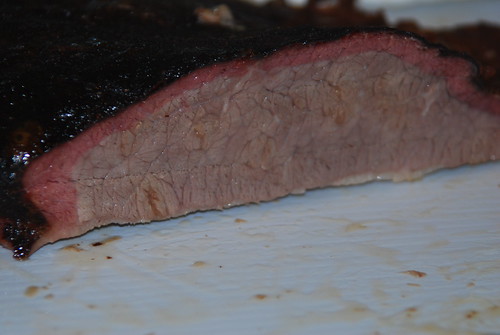
Creekstone Prime Angus Injected with Butchers Prime Beef Injection.
Always Trust Your Butcher!

Replies sorted oldest to newest
quote:Originally posted by AZScott:
What are you using to get that smoke ring? Charcoal pellets? My smoke ring is always about a 1/4" but never like that.
quote:Originally posted by GaryT:
I have a question; When is the smoke ring created?
quote:Originally posted by WayneB:
I have only used Fast Eddies 100% Hickory and have never not had a smoke ring on my FEC100.
Wayne B
quote:Originally posted by electro tech:
Here is a link that i send customers that have questions. http://bbq.about.com/od/barbecuehelp/g/gsmokering.htm
quote:Originally posted by Harpo:
Found this link that doesn't mention tempature but does explane the chemical process.
http://www.smokingpit.com/Info/SmokeRing.pdf
quote:Originally posted by Harpo:
I love cooking with Hickory myself. When I had my traeger I would add some cherry to the mix. I have heard that cherry is a good wood for improving the smoke wood. Still playing around with my new 100 so haven't tried it yet.